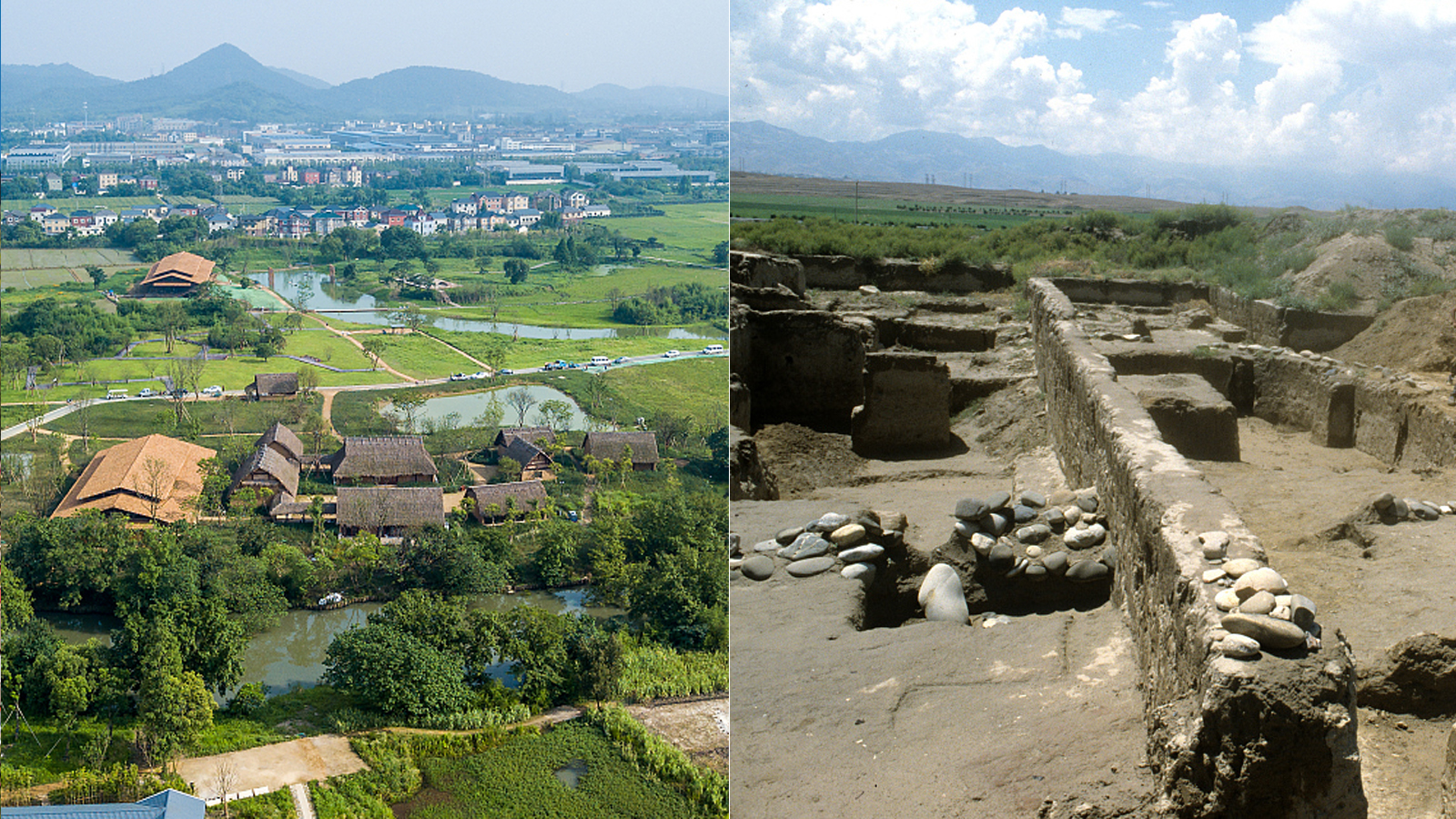
The Archaeological Ruins of Liangzhu City in China (left) and the Proto-urban Site of Sarazm in Tajikistan. /CFP
The Archaeological Ruins of Liangzhu City in China (left) and the Proto-urban Site of Sarazm in Tajikistan. /CFP
Discovered in the early 20th century, the ruins in Liangzhu, Zhejiang including densely distributed villages, tombs and altars, offer a comprehensive overview of early urban development in Chinese civilization from 3,300 to 2,300 BCE. One millennium earlier, in the Zarafshan Valley in Tajikistan, people gathered and settled down during this transitional era between pastoral nomads and agrarian people. The ruins of this settlement, one of the oldest in Central Asia, demonstrate the early development of proto-urbanization in this region. A closer inspection of these two UNESCO World Heritage sites shows the early urban life of the inhabitants of these two far-removed settlements in Asia.
Archaeological Ruins of Liangzhu City
Located in the Yangtze River Basin of east China's Zhejiang Province, the Archaeological Ruins of Liangzhu City site reveals an early regional state with rice-cultivating agriculture as its economic base, and social differentiation and a unified belief system, which existed in the late Neolithic Period (6000-2000 BCE) in China.
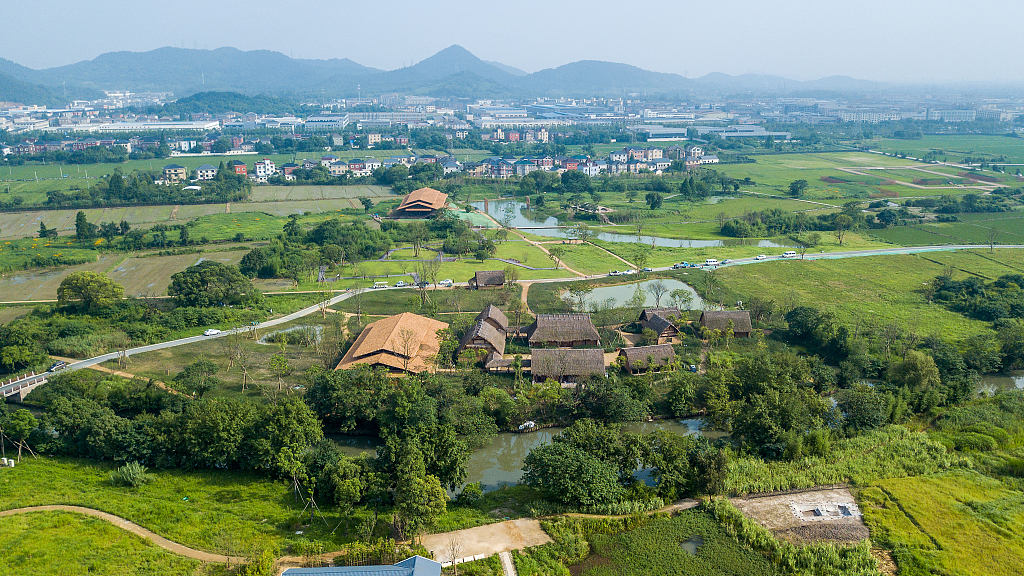
A bird's-eye view of the Archaeological Ruins of Liangzhu City, east China's Zhejiang Province /CFP
A bird's-eye view of the Archaeological Ruins of Liangzhu City, east China's Zhejiang Province /CFP
To date, archeologists have unearthed a city site, a peripheral water network, differentiated burials in cemeteries and more than 10,000 individual relics, mostly sophisticated jade objects.

Jade objects unearthed at the Archaeological Ruins of Liangzhu City are displayed at the Palace Museum in Beijing in 2019. /CFP
Jade objects unearthed at the Archaeological Ruins of Liangzhu City are displayed at the Palace Museum in Beijing in 2019. /CFP
A deity and animal mask pattern was typically carved on many of the jade items, which was the god worshiped by Liangzhu people, indicating a unified belief system had been formed in this society around 5,000 years ago.
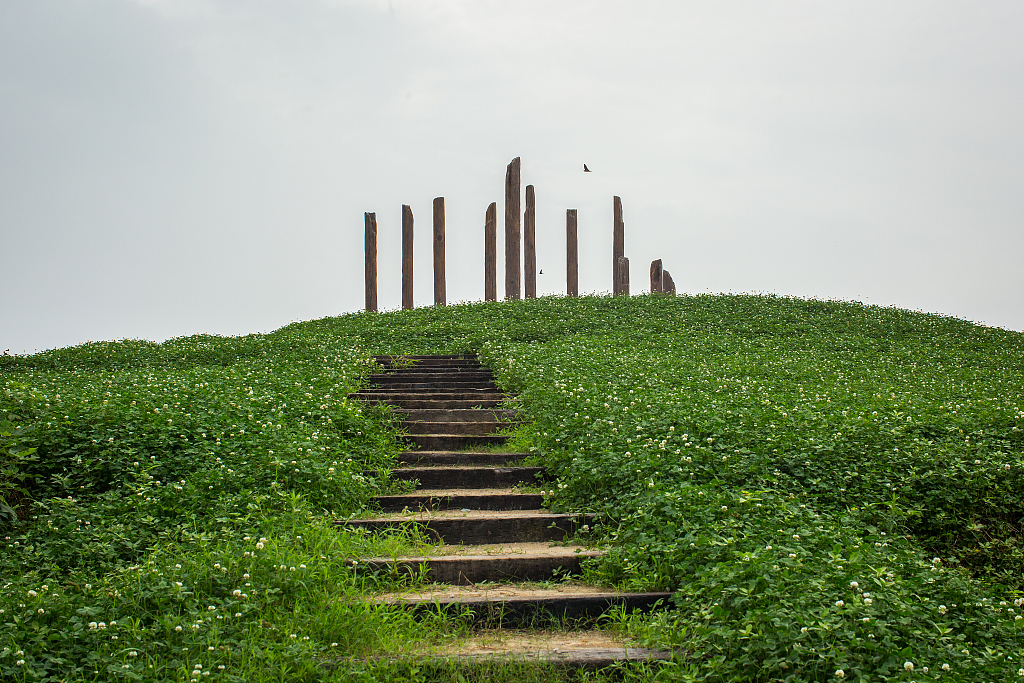
A stylobate of a palace still exists at the Archaeological Ruins of Liangzhu City. /CFP
A stylobate of a palace still exists at the Archaeological Ruins of Liangzhu City. /CFP
Relics unearthed in cemeteries also prove the strict social hierarchy of Liangzhu culture based on the scale of the burials and number of objects. Society could be classified into four classes – royalty, nobility, craftsman and warrior, and common civilian; in other words the ruling class, the upper class, the middle class and the lower class.
Situated northwest of the city area, 11 artificial dams have been unearthed, which formed China's first large-scale water conservancy system and world's earliest dam system. Together with the natural mountains and spillways, this multifunctional water conservancy system was used for flood control, transport, irrigation and daily use.
Proto-urban Site of Sarazm
Sarazm, which means "where the land begins," is an archaeological site of human settlements in Tajikistan dating back to the period from 4,000 to 3,000 BCE. Consisting of sophisticated dwellings and other infrastructure, the site witnessed the early development of settlements in Central Asia.
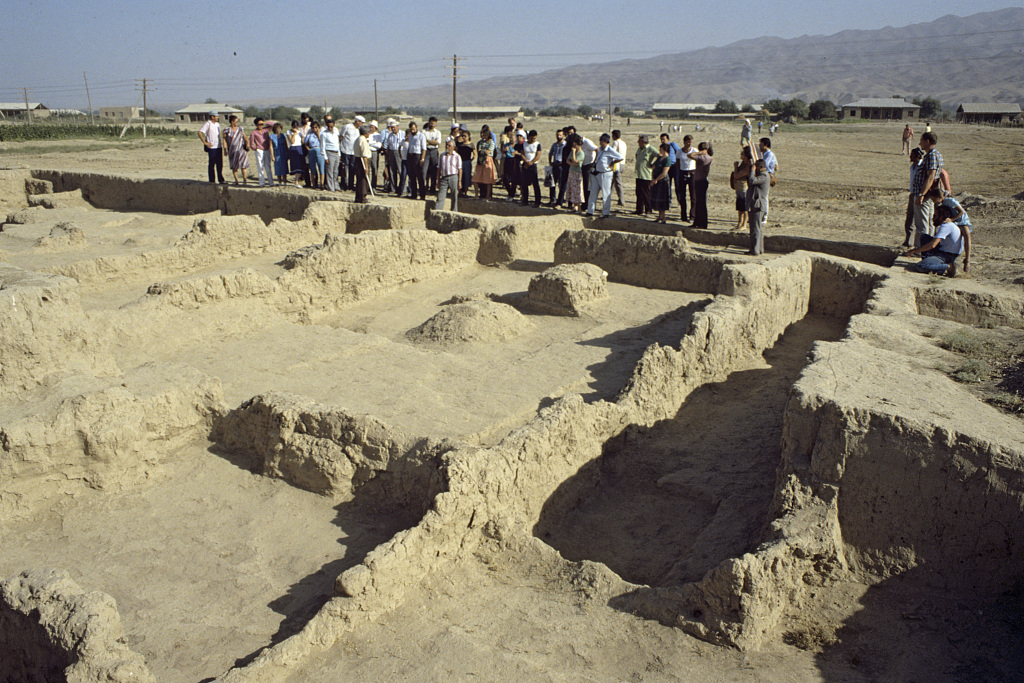
The Proto-urban Site of Sarazm, Tajikistan, is still under excavation. /CFP
The Proto-urban Site of Sarazm, Tajikistan, is still under excavation. /CFP
It was first formed by the coexistence of pastoralism and early agrarianism, since the site was situated between a mountainous region suitable for cattle rearing by nomadic pastoralists, and a large valley conducive to the development of agriculture and irrigation by the first settled populations in the region. Subsequently, the settlements witnessed an exploitation of mineral resources during the Bronze Age and the development of handicrafts.
The ancient town first was discovered in 1976 by a farmer at a construction site, and the next year archaeologists began to excavate the site where deposits of free-threshing hexaploid wheat, naked barley and hulled barley were gradually unearthed.
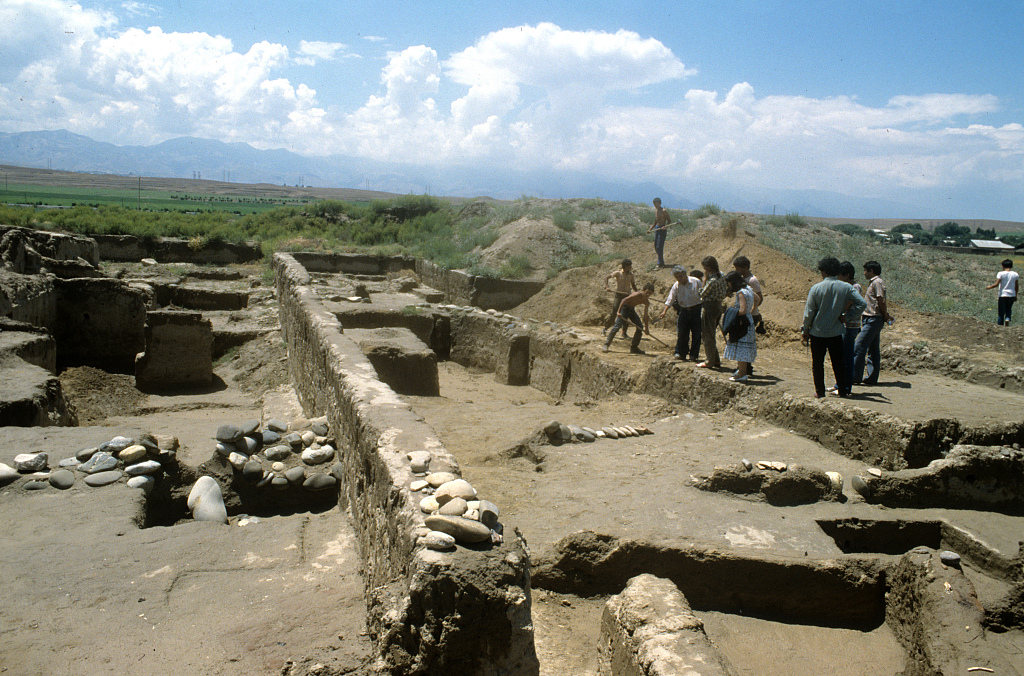
The Proto-urban Site of Sarazm, Tajikistan, is still under excavation. /CFP
The Proto-urban Site of Sarazm, Tajikistan, is still under excavation. /CFP
The most important archeological finding was the burial site of a woman wearing fine jewelry. She is called "the Lady of Sarazm" and her remains are displayed in the Museum of National Antiquities in Dushanbe.
The Proto-urban Site of Sarazm proves the existence of trade relations and the exchange of cultures between peoples far and wide across greater Asia, from the Indian Ocean to Turkmenistan. The site is one of the locations that gave birth to and saw the development of the major trans-Eurasian trade routes.